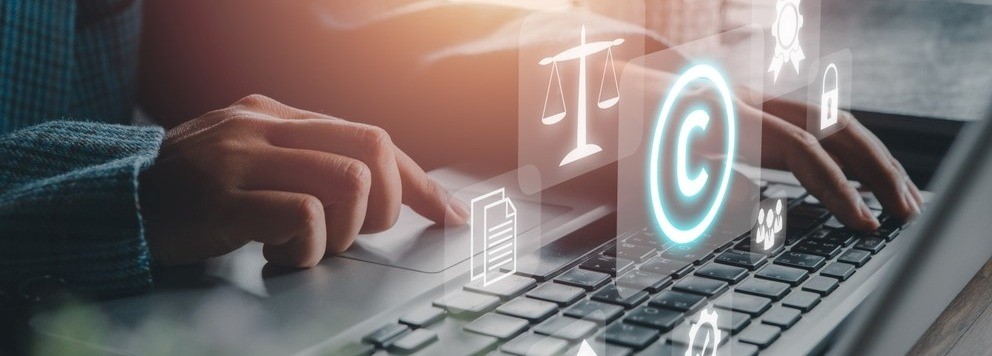Delaware District Court Ruling Raises Critical Fair Use Challenges for AI Companies: Implications for Copyright Compliance and Competitive Practices
Legal Alerts
2.17.25

Case Takeaways
-
- Commercial use: AI training with copyrighted materials can be commercial use, even if content isn’t visible in the final product.
- Non-transformative: AI training isn’t automatically transformative, especially if the AI product serves a similar function to the original work.
- Market impact: Both current and potential future markets must be considered in fair use assessments.
- Competitive products: Using copyrighted materials to develop competing products weakens fair use defense.
- Intermediate use: AI training may face stricter scrutiny than other software development contexts regarding fair use of copyrighted materials.
- Factor balancing: Purpose of use and market effects carry more weight than other fair use factors in AI contexts.
The fair use defense may have narrowed for AI companies after a Delaware federal court ruled that ROSS Intelligence infringed upon 2,243 of Thomson Reuters’ copyrighted headnotes. In Thomson Reuters v. ROSS Intelligence Inc.,[1] Thomson Reuters, which operates the major legal research platform Westlaw, brought the lawsuit against its competitor, ROSS Intelligence, which is developing an AI-powered legal research tool. The lawsuit claimed that ROSS used Westlaw’s copyrighted headnotes and Key Number System as the basis for training data for its AI tool. In an order granting partial summary judgment, U.S. Circuit Judge Stephanos Bibas of the Third Circuit (overseeing the case by designation) dismissed all of ROSS’s defense arguments, including fair use and innocent infringement. Although the court was careful to emphasize that the case before him did not implicate generative AI, this decision has the potential to impact AI development and the use of copyrighted material in AI training, potentially changing how all AI companies utilize copyrighted content.
AI systems, including those for text and image generation, are built upon sophisticated models trained on enormous datasets. These models, such as Large Language Models for text and Diffusion Models for images, learn patterns and structures from vast collections of human-created content. The scale of data required for training is immense—for example, one prominent language model was reportedly trained on the equivalent of tens of millions of books. This massive data requirement often leads AI companies to incorporate copyrighted works into their training sets. In some instances, AI companies have relied on the fair use doctrine to justify their use of copyrighted materials in training generative AI models. In doing so, these AI companies have argued that their use is transformative and serves the public interest by advancing AI technology, which they claim should qualify it as fair use and a defense against copyright infringement. This defense draws on precedents like Authors Guild v. Google, Inc.,[2] where tech companies successfully argued that their use of data was transformative and thus fair use.
In Thomson Reuters, the court rejected ROSS’s claim of fair use as a defense for copyright infringement. The court’s analysis focused primarily on the purpose of use and market impact. It found ROSS’s utilization of Thomson Reuters’ headnotes to be commercial and non-transformative, despite arguments of intermediate use. The court cited the Supreme Court’s recent decision in Andy Warhol Foundation v. Goldsmith[3] to support its reasoning that ROSS’s use of Thomson Reuters’ content was not transformative, emphasizing that when an original work and a secondary use share similar commercial purposes, the first fair use factor is likely to weigh against fair use, thus reinforcing the court’s conclusion that ROSS’s AI-driven legal research tool served a purpose highly similar to Westlaw’s original content. The court also considered potential future markets for AI training data, not just current market impacts. While some factors favored ROSS, the overall balance, particularly the crucial aspects of purpose and market effect, did not support fair use.
The ruling in Thomson Reuters underscores the legal challenges facing AI companies in using copyrighted content for training, especially when developing products that compete with the original works. While the case did not directly address generative AI, the court’s ruling may act as a bellwether for more stringent scrutiny of fair use claims in AI development contexts.
If you have any questions about the information in this alert, please contact Mike Word, Diego Freire, or your relationship attorney.
[1] Thomson Reuters Enter. Ctr. GmbH v. Ross Intel. Inc., No. 1:20-cv-613.
[2] Authors Guild v. Google, Inc., 804 F.3d 202 (2d Cir. 2015).
[3] Andy Warhol Found. for the Visual Arts, Inc. v. Goldsmith, 598 U.S. 508, (2023).



